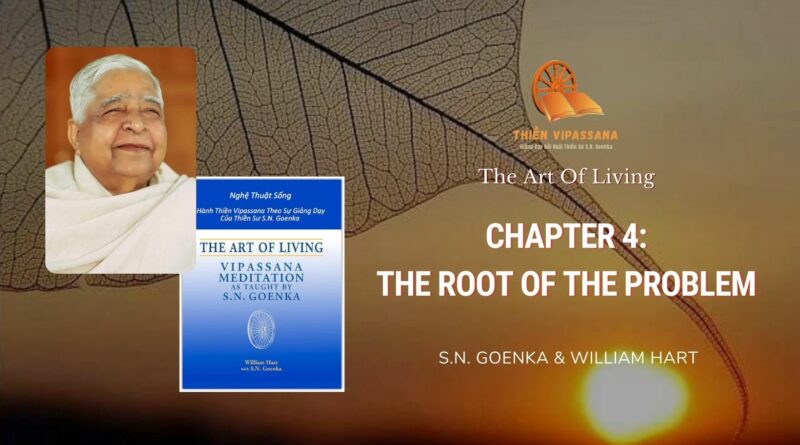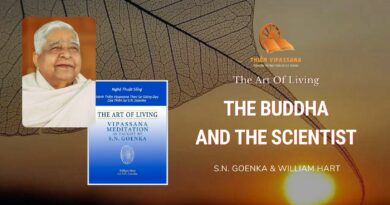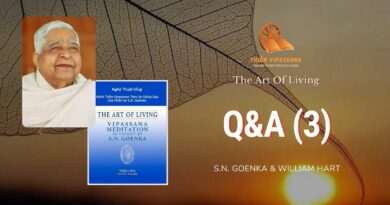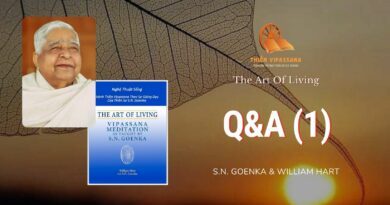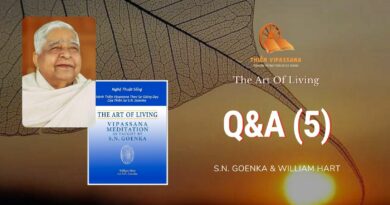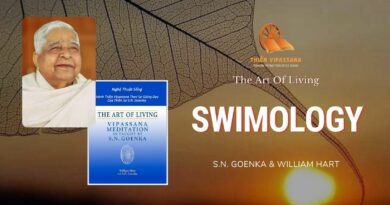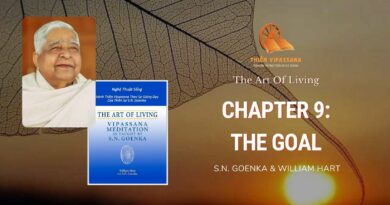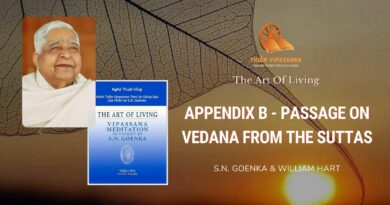Chapter 3. THE IMMEDIATE CAUSE
The real world bears no resemblance to the world of fairytales in which everyone lives happily ever after. We cannot avoid the truth that life is imperfect, incomplete, unsatisfactory—the truth of the existence of suffering.
Given this reality, the important things for us to know are whether suffering has a cause, and, if so, whether it is possible to remove that cause, so that suffering may be removed. If the events that cause our suffering are simply random occurrences over which we can have no control or influence, then we are powerless and might as well give up the attempt to find a way out of suffering. Or if our sufferings are dictated by an omnipotent being acting in an arbitrary and inscrutable manner, then we ought to find out how to propitiate this being so that he will no longer inflict suffering on us.
The Buddha realized that our suffering is not merely a product of chance. There are causes behind it, as there are causes for all phenomena. The law of cause and effect—kamma—is universal and fundamental to existence. Nor are the causes beyond our control.
Kamma
The word kamma (or, in its more widely known Sanskrit form, karma) is popularly understood as meaning “fate.” Unfortunately, the connotations of this word are exactly opposite to what the Buddha intended by kamma. Fate is something outside our control, the decree of providence, what has been preordained for each one of us. Kamma, however, literally means “action.” Our own actions are the causes of whatever we experience: “All beings own their deeds, inherit their deeds, originate from their deeds, are tied to their deeds; their deeds are their refuge. As their deeds are base or noble, so will be their lives.”1
Everything that we encounter in life is the result of our own actions. Consequently, we can each become master of our fate by becoming master of our actions. Each of us is responsible for the actions that give rise to our suffering. Each of us has the means to end the suffering in our actions. The Buddha said,
You are your own master,
You make your own future.2
As it is, each of us is like a blindfolded man who has never learned to drive, sitting behind the wheel of a speeding car on a busy highway. He is not likely to reach his destination without mishap. He may think that he is driving the car, but actually the car is driving him. If he wants to avoid an accident, let alone arrive at his goal, he should remove the blindfold, learn how to operate the vehicle, and steer it out of danger as quickly as possible. Similarly, we must become aware of what we do and then learn to perform actions that will lead us where we really wish to go.
Three Types of Actions
There are three types of actions: physical, vocal and mental. Normally we attach most importance to physical actions, less to vocal actions, and least to mental actions. Beating a person appears to us a graver action than speaking to him insultingly, and both seem more serious than an unexpressed ill will toward the person. Certainly this would be the view according to the manmade laws of each country. But according to Dhamma, the law of nature, mental action is most important. A physical or vocal action assumes totally different significance according to the intention with which it is done.
A surgeon uses his scalpel to perform an emergency life-saving operation which turns out to be unsuccessful, leading to the death of the patient; a murderer uses his dagger to stab his victim to death. Physically their actions are similar, with the same effect, but mentally they are poles apart. The surgeon acts out of compassion, the murderer out of hatred. The result each achieves will be totally different, according to his mental action.
Similarly, in the case of speech, the intention is most important. A man quarrels with a colleague and abuses him, calling him a fool. He speaks out of anger. The same man sees his child playing in the mud and tenderly calls him a fool. He speaks out of love. In both cases the same words are spoken, but to express virtually opposite states of mind. It is the intention of our speech which determines the result.
Words and deeds or their external effects are merely consequences of mental action. They are properly judged according to the nature of the intention to which they give expression. It is the mental action which is the real kamma, the cause which will give results in future. Understanding this truth the Buddha announced,
Mind precedes all phenomena,
mind matters most, everything is mind-made.
If with an impure mind
you speak or act,
then suffering follows you
as the cartwheel follows the foot of the draft animal.
If with a pure mind
you speak or act,
then happiness follows you
as a shadow that never departs.3
The Cause of Suffering
But which mental actions determine our fate? If the mind consists of nothing but consciousness, perception, sensation, and reaction, then which of these gives rise to suffering? Each of them is involved to some degree in the process of suffering. However, the first three are primarily passive. Consciousness merely receives the raw data of experience, perception places the data in a category, sensation signals the occurring of the previous steps. The job of these three is only to digest incoming information. But when the mind starts to react, passivity gives way to attraction or repulsion, liking or disliking. This reaction sets in motion a fresh chain of events. At the beginning of the chain is reaction, saṅkhāra. This is why the Buddha said,
Whatever suffering arises
has a reaction as its cause.
If all reactions cease to be
then there is no more suffering.4
The real kamma, the real cause of suffering is the reaction of the mind. One fleeting reaction of liking or disliking may not be very strong and may not give much result, but it can have a cumulative effect. The reaction is repeated moment after moment, intensifying with each repetition, and developing into craving or aversion. This is what in his first sermon the Buddha called taṇhā, literally “thirst”: the mental habit of insatiable longing for what is not, which implies an equal and irremediable dissatisfaction with what is.5 And the stronger longing and dissatisfaction become, the deeper their influence on our thinking, our speech, and our actions—and the more suffering they will cause.
Some reactions, the Buddha said, are like lines drawn on the surface of a pool of water: as soon as they are drawn they are erased. Others are like lines traced on a sandy beach: if drawn in the morning they are gone by night, wiped away by the tide or the wind. Others are like lines cut deeply into rock with chisel and hammer. They too will be obliterated as the rock erodes, but it will take ages for them to disappear.6
Throughout each day of our lives the mind keeps generating reactions, but if at the end of the day we try to remember them, we shall be able to recall only one or two which made a deep impression that day. Again, if at the end of a month we try to remember all our reactions, we shall be able to recall only one or two which made the deepest impression that month. Again, at the end of a year we shall be able to recall only the one or two reactions that left the deepest impression during that year. Such deep reactions as these are very dangerous and lead to immense suffering.
The first step toward emerging from such suffering is to accept the reality of it, not as a philosophical concept or an article of faith, but as a fact of existence which affects each one of us in our lives. With this acceptance and an understanding of what suffering is and why we suffer, we can stop being driven and start to drive. By learning to realize directly our own nature, we can set ourselves on the path leading out of suffering.
Bài viết này được trích từ cuốn sách The Art Of Living – Thiền Sư S.N.Goenka và William Hart.

